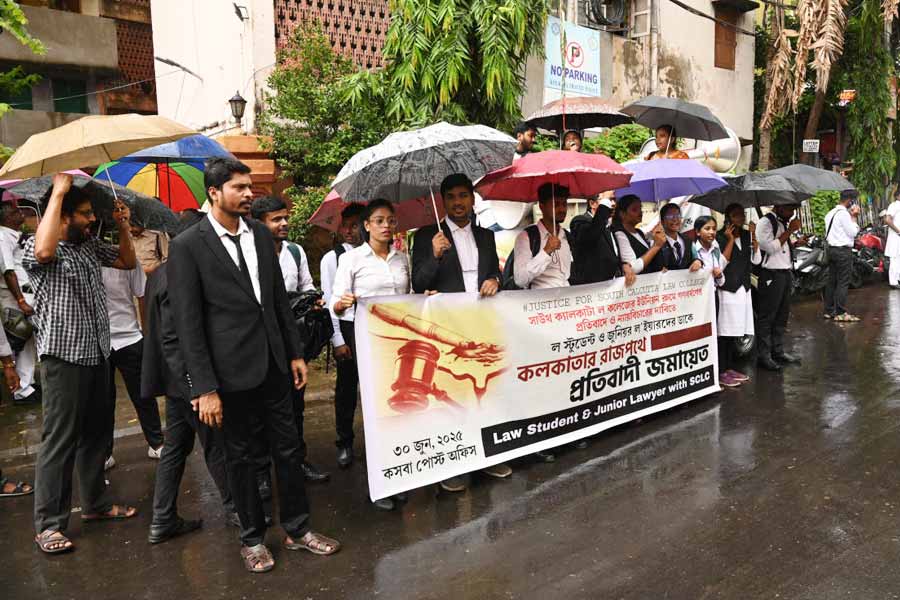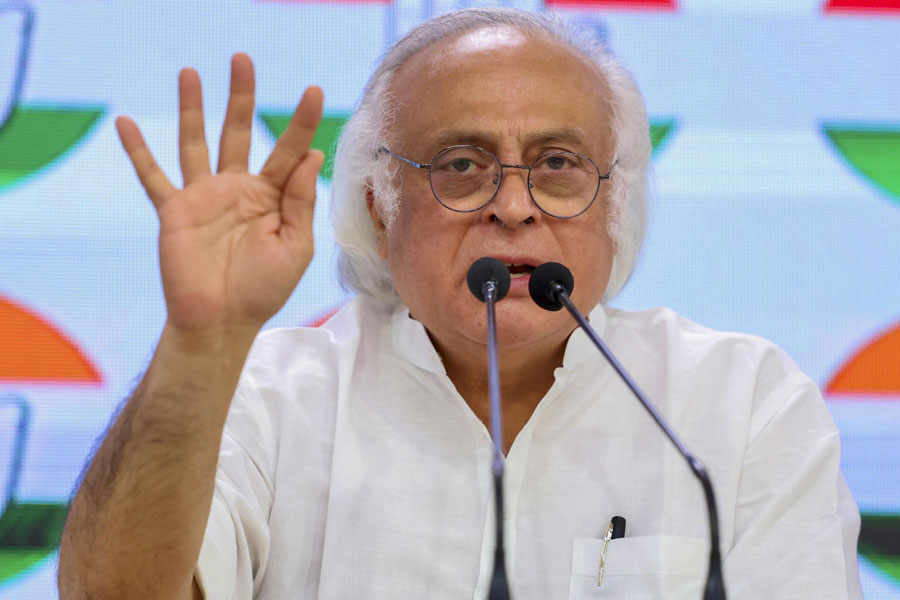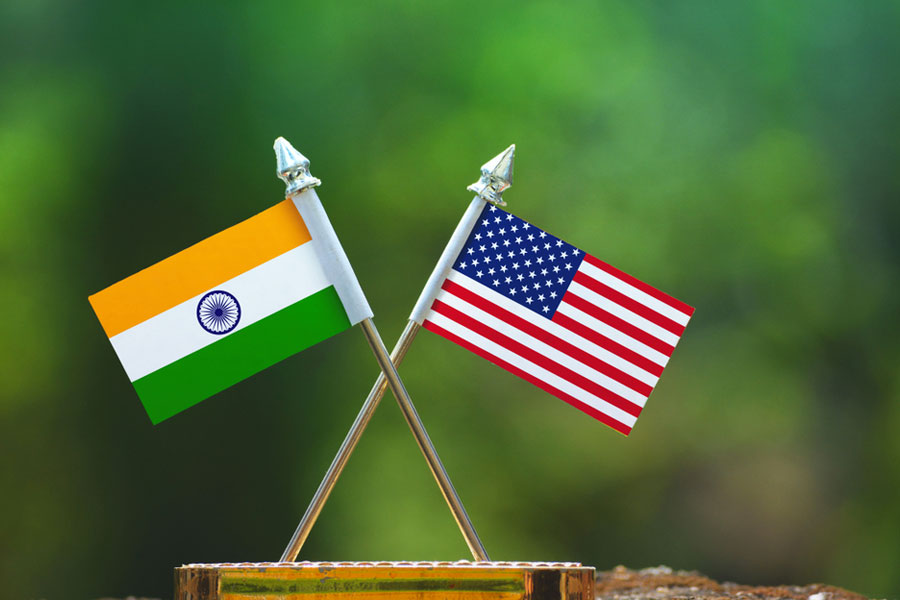 |
 |
| Anjan Dutta wants to do for Bengali films what he did for Bengali music back in the ’90s; Aparajita Ghosh Das and Churni in a moment from Dutta’s latest film Chalo Lets Go |
Imagine Erich Segal’s maudlin classic Love Story turned into a Tollywood sob story. Would that story be a sellout in the backwaters of Purulia and Bankura? Tough to imagine isn’t it? But it could become a blockbuster in urban Bengal couldn’t it? Won’t the cell-carrying, iPod-toting youngsters of Calcutta sit there with their eyes glued to the screen?
That’s what filmmaker Riingo is putting his money on. His movie Love — which is scheduled to release later this month — is based loosely on Love Story, which ends tragically. He’s hoping that urban audiences will be weeping in the halls as they follow the fates of the love that lasted till the grave.
For the young director, Love is just the first of many films he plans in the coming months. In line are a Hindi film and a couple of Bengali movies, including one with Prosenjit titled Hooghly, which is inspired by Godfather. Others include a celluloid horror story and a thriller starring Jeet. Also on the cards is a movie on terrorists with Jishhu in the lead, which will be shot in Assam.
 |
 |
| Anirudhha Roy Chowdhury is starting work soon on his new movie Antaheen, a story about urban loneliness; Rahul Bose and Rituparna Sengupta in his first movie Anuranan. Roy Chowdhury took eight years to find a producer for the movie |
Turn the lens on singer- turned-moviemaker Anjan Dutta, whose movie Chalo Let’s Go that released last week is about a group of Calcutta youngsters and their trials and tribulations — Dutta calls it “a travelogue based on relationships”. He is currently at the post production stage on his next movie, which will be in English, called Chowrasta — Crossroads of Love. Up next is a Bengali thriller.
What’s different about Riingo’s and Dutta’s movies? They are aimed at urban moviegoers who want to watch movies about everyday city people caught in a tangle of love or adventure. Says Dutta: “My movie Bong Connection was a success and it reaffirmed my belief that there’s an audience out there that wants to see movies they can relate to.”
Dutta and Riingo are at the vanguard of a new group of filmmakers making movies in Bengali for urban audiences — call them Bengali multiplex movies if you like. Made on relatively low budgets, they hope to rake in cash by playing in urban areas and from other extras like foreign and music rights. Says Riingo: “Calcutta is quite geared up now to come up with projects which look and sound international in Bangla. We are really moving fast.”
And so you have romcoms, thrillers, horror movies, romances with a quirky touch, relationship sagas and even a film based on an MMS scandal. And it’s not mainstream Tollywood which is churning out these movies. Like director Saron Datta says: “It was a very classist way of putting it, but it was said that domestic helps watch Bangla commercial movies.” Now the scenario is different. You have everyone from film school graduates to advertising professionals to actors-turned-directors making movies catering to the urban multiplex audiences. And this young crowd is not afraid to speak their minds about anything under the sun.
 |
 |
| Saron Datta (above) found it difficult to persuade producers that urban films would generate good returns; The posters for his horror film Raat Barota Paanch attracted lots of attention |
Take a look at Anirudhha Roy Chowdhury, the maker of Anuranan, one of the earliest New Wave movies in Bengali. Roy Chowdhury is soon going to the floors with his new movie Antaheen, a story about three couples and a woman, starring Sharmila Tagore, Aparna Sen and Rahul Bose. Shantanu Moitra has scored the music for the first time in a Bengali film.
“It is a movie about urban loneliness and distances. It is a different kind of a love story,” says Roy Chowdhury, whose company Screenplay Films is producing the movie. He’s also working on the script of a Hindi film on terrorism.
The new filmmakers have demonstrated that they are willing to try their hands at any and every genre of movies. Mainak Bhowmik, for instance, shot to fame with a comedy Aamra. He’s now coming out with another comedy, tentatively titled Maach, Mishti and More. He has also edited the movie Chalo Lets Go. Saron Datta started out with a horror film Raat Barota Paanch and then made an action thriller Shikar. Saron’s writing the script for a thriller which he hopes to start work on soon.
 |
 |
| Sandip Ray reckons that his movie Nishijapon might have done better in today’s environment; (From left) Sabyasachi Chakrabarty, Raima Sen, Soumitra Chatterjee and Dipankar De in the movie |
Similarly, editor-turned filmmaker Rabiranjan Moitra started out by making horror film Mantra and he’s now planning a film with a twist on the lines of a Roald Dahl story. Moitra has worked both in Tollywood and Bollywood and has edited Eklavya: The Royal Guard.
Other moviemakers too have demonstrated that they are willing to try their hand at any kind of theme. Advertising professional-turned-director Rangan Chakravarty is making a romcom Bor Ashbe Ekhuni , which he says has an ‘urban sensibility’. And Quashik Mukherjee, known as Q, is ready with his movie 3X, which has an avant-garde theme about three women who were friends in college. They meet after several years and decide to score with men. That’s strong stuff and not the sort of melodrama that Bengali audiences are accustomed to. Says Rangan Chakravarty: “The expectations of the audience are now different. Tollywood has moved away from the urban upper class, so trying to draw them back is difficult.”
Other newcomers are being equally daring — and aiming high. Nilanjan Banerjee, who has graduated from Satyajit Ray Film and Television Institute (SRFTI) has just started shooting his maiden venture, Tomar Jonno, a love story inspired by Chaplin’s City Lights. Banerjee, who’s directed TV shows like Airtel Bandwagon, says his movie will have an “old Uttam- Suchitra feel”. “The elements are regular Tollywood but have been treated in a different way,” he says. He adds: “For a multiplex, you have to make different kinds of movies.”
 |
 |
| Actor Arjun Chakrabarty finally realised his dream of being a director with Tollylights, a movie on an ordinary woman trying to make it big in the world of glamour; A still from Tollylights |
Others like actor Arjun Chakrabarty too are thinking on the same lines and turning their attention to ‘meaningful’ projects. Arjun’s Tollylights hit the screens earlier this year.
The producers too are watching out for the emergence of a new genre of Bengali movies that won’t only be aimed at rural audiences. Take a look at four-year-old Bangla Talkies, which has put its money behind five movies so far — Raat Barota Paanch, Aamra, Bor Ashbe Ekhuni, 3X and Padakhhep. Four of these have urban-oriented themes and the fifth is what the company calls an ‘art house’ movie. Says Nitesh Sharma, the proprietor of Bangla Talkies: “I could not relate to the mainstream commercial fare. And if I couldn’t watch something myself, how could I expect people to watch it?”
Bangla Talkies isn’t the only corporate entity that’s jumping into the business. Zee Entertainment Enterprises has mostly put its money into regular Tollywood fare but it has also backed Banerjee’s Tomar Jonno. Other producers are also taking note of the change. So Bipin Vora, who earlier produced films like 15 Park Avenue and Yatra, is now scouting around for a good subject. “I want to do something like Life in a Metro and a cross-cultural movie,” he says.
Then, there’s Joy Ganguly, of Moxie Entertainments — the producers of Bong Connection — who reckons his company is partly responsible for the changes that are happening because it put its money into the genre quite early.
 |
 |
| Quashik Mukherjee is ready to release his movie 3X which has an avant-garde theme about three women; Rituparna, one of the movie’s three stars |
What has triggered the changes that are taking place? For a start the emergence of multiplexes have created more outlets where urban-oriented themes can be shown. What’s more, multiplex culture is spreading out from Calcutta to other smaller cities like Siliguri and Durgapur. “I have seen people coming all the way from Burdwan to watch Bong Connection in Durgapur,” says Anjan Dutta.
But that’s not all. It isn’t sheer commerce that’s dictating the new themes. The new moviemakers say they are only reflecting changes that are taking place in society. Mainak firmly insists that he “cannot make films which he can’t relate to”.
Keeping costs under control is key for the new breed of moviemakers. So Riingo’s Love was made on a budget of Rs 45 lakh. And Mainak made Aamra on a budget of just Rs 15 lakh. Bong Connection, by comparison, was a big budget — Rs 1 crore. Now, however, the film industry is gaining confidence in the new style movies. Budgets are going up. Banerjee’s Tomar Jonno has a budget of Rs 55 lakh-Rs 60 lakh — a large amount for a newcomer. And Bor Ashbe Ekhuni by Bangla Talkies has a budget of Rs 75 lakh. But it isn’t only about keeping costs under control. The new breed of movies can recover costs by selling DVD rights, satellite rights and music rights.
If that isn’t enough they are also making a bit of extra money with tricks like “in-film marketing”. For instance, the story of Sandip Ray’s Kailashe Kelenkari was slightly altered for an in-film promo. So instead of a feature film shoot, they showed the shooting of an ad film by Senco Gold.
Similarly, points out Nitesh Sharma of Bangla Talkies, in Bor Ashbe Ekhuni, there are a lot of in-film promotions. Says Sharma: “Koel rides a TVS scooty and wears Goldlights jewellery from P.C. Chandra. There is also Red FM,” says Nitesh.
 |
 |
| Mainak Bhowmik firmly insists that he cannot make films which he can’t relate to; A scene from Aamra, a comedy, which was his debut venture |
Time, as they say in the movie business, is money in the bank. Riingo is particularly conscious of this. His movie Love was completed in 21 days. Another film Nil Rajar Deshe was shot in 18 days. Riingo shoots in about 22 days and then takes about 10-12 days to edit the movie. Then it’s on to post production: he expects to finish the movie in between 45 and 50 days.
One obvious reason for the sudden popularity of these movies is that they seem to make money. The wheel really started moving with films like Anirudhha Roy Chowdhury’s Anuranan and Anjan Dutta’s Bong Connection which released at the multiplexes — a first for Bangla movies.
The films were unexpected hits and brought audiences back into the theatres. Says Subhasis Ganguli, regional general manager, INOX City Centre: “Films like Anuranan and Bong Connection have fared very well at the box office with average occupancies going up to 80 per cent to 90 per cent competing with their Bollywood counterparts. We had a lot of block bookings and the target audience was predominantly the young crowd.”
Others trace the rise of the multiplex movies back even further. They say that a noticeable change took place when Rituparno Ghosh came out with movies like Unishe April, and the urban and educated class started trickling back to the theatres. Then there was Subrata Sen’s Ek Je Aachhe Kanya, which appealed to the urban masses. But these movies were few and far between and not really the norm.
 |
 |
| (Above) Advertising professionalturned-filmmaker Rangan Chakravarty has made his debut with a romcom Bor Ashbe Ekhuni; Jishhu Sengupta and Koel Mallick in the movie |
It also goes without saying, of course, that Sandip Ray’s Feluda movies have been aimed primarily at an urban audience. Ray is also capitalising on the enthusiasm for urban environment movies and his Tintorettor Jishhu aims to hit the screens in December. He’s also planning to start shooting on his next movie by the Pujas. He now says that his movie Nishijapon came out a bit too early to capitalise on the urban wave.
 |
 |
 |
 |
| (From top) Nilanjan Banerjee’s first film Tomar Jonno is a romantic movie that’s aiming for the old Uttam-Suchitra-style feel; A still from the TV show Airtel Bandwagon, which he directed; Riingo started out with a masala flick but soon changed tracks; (Below) A scene from Nil Rajar Deshe |
Anjan Dutta has, in fact, nursed ambitions of making Hindi and English movies with an urban theme for much longer. His first film, Bada Din was released back in the ’90s. But along the way he figured that Bengal was his field of action. “I realised that at the end of the day I was singing Bengali songs and people have accepted me as a Bengali pop singer. So why not make films in Bengali? I wanted to reach out to the crowd that listens to my songs,” he says.
Nevertheless, it’s only in recent times that finance has been available for these movies. Ray points out how he had to wait for decades before finding any money even for a Feluda movie. “I had to wait for 25 years before I got a producer for making a Feluda movie,” he says.
Even Roy Chowdhury had to wait for eight years to make Anuranan, which initially created headlines because it was a Bangla film shot in the UK. An ad filmmaker, he saved up money to make Anuranan under his company Opus Communications.
It was a similar story for Saron Datta. “When I started out, it was difficult to make people realise that a ponytailed guy who moves around in Fabindia kurtas could make films which would bring returns,” laughs Saron. He got a producer in Sharma of Bangla Talkies, who was willing to do things which were out of the box.
 |
| Editor-turned filmmaker Rabiranjan Moitra started out by making a horror film, Mantra |
The newcomers are as varied bunch as could be — and the majority are conspicuously not part of mainstream Tollywood. Riingo was in advertising for 13 years and he even spent five years as the Bangladesh chief of Grey. Besides that he has written telefilms and serials for Bengali channels like Akash Bangla, Tara and Zee Bangla. Quashik too was an ad man and had worked as executive creative director at Ogilvy and Mather in Sri Lanka. He reckons the challenge for him, “was to come back to Calcutta and do things on a pittance”. He is currently shooting a documentary called Love In India and is also trying to make serious Bangla rap music.
Rangan Chakravarty too is from the ad world. And Anjan Dutta still does singing gigs at city venues. All of them are convinced that a change is underway and it’s here to stay. Says Anjan Dutta: “Things are changing, and I want to be a part of the change.”











